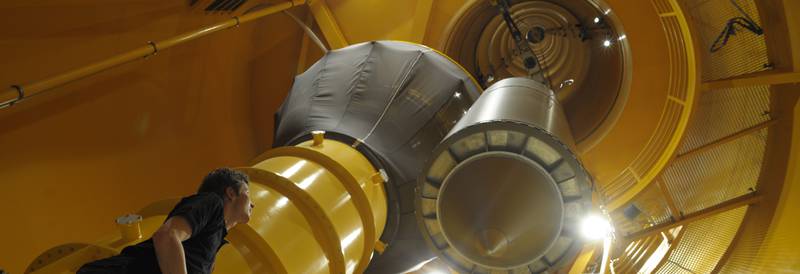Experiments in weightlessness
It is not easy to grasp for everyone that research in weightlessness can be conducted not only in space but also on Earth. But it happens at ZARM up to three times a day in the Bremen Drop Tower and even 20 times per hour in the GraviTower Bremen Pro. When only a fraction of the Earth's gravitational force prevails in these two microgravity laboratories, a wide variety of phenomena can be investigated that are not detectable under normal gravitational conditions. But what is actually being studied and why is research under zero gravity so relevant for us?
What is being investigated?
Science teams from all over the world come to Bremen to use the Drop Tower and the GraviTower for their research. The experiments conducted range from astrophysics, biology, chemistry, combustion research, fluid mechanics, materials science to fundamental physics.
Some of the experiments in microgravity are directly related to space travel: technologies or specific hardware are tested that will later be used in space missions. For the "MASCOT Lander", which successfully landed on the asteroid Ryugu in 2018, tests were carried out in the Drop Tower to examine how the landing module separates from the probe. The behavior of liquids in weightlessness is also an important field of research, because this is relevant to questions about fueling space systems in space or the operation of life support systems. Even biological experiments can be subjected to weightlessness at ZARM - because the more seriously we think about sending an astronautical mission to Mars, the more intense we need to research plant growth under altered gravitational conditions.
But the absence of gravity can also be used for fundamental research that is not directly related to space science but still benefits from being able to study processes briefly without the "disturbing factor of gravity". This applies, for example, to combustion processes. At ZARM, research is being carried out investigating how fuel combustion can produce the least emission. Another research group, which is part of a large German consortium, generates "Bose-Einstein condensates" under microgravity for a much longer period than would be possible under normal laboratory conditions.
Find out how weightlessness is achieved in the Drop Tower Bremen and what makes it unique compared to other microgravity labs worldwide.
ZARM is building a second microgravity lab that works without a vacuum - the GraviTower Bremen Pro. Thus, it will be able to perform hundreds of experiments per day.
ZARM scientist Martin Castilllo explains his research on a new luminescent powder which he creates using the Drop Tower Bremen. This electro-luminescent material has the potential to generate a new generation of LCD displays that use a fraction of the energy required by today's devices.
Follow YouTube legend Tom Scott on his visit to the Drop Tower Bremen.
Watch a short documentation of what is happening in the Drop Tower by a team from "The Guardian".




 "
"